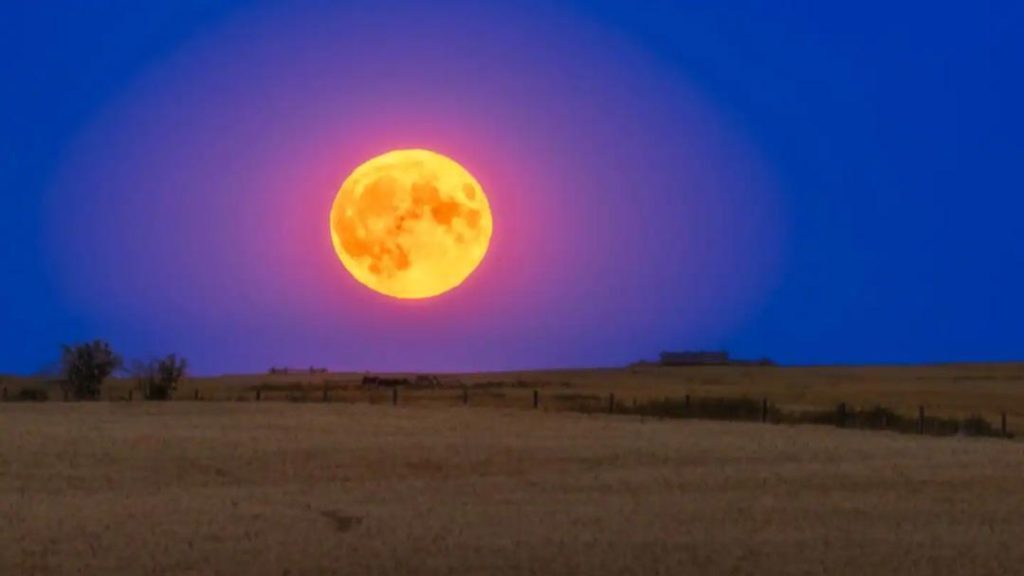
Buck Moon to Light Up Skies on July 10 & 11
As we approach the midpoint of July, the night sky is set to receive a spectacular visitor – the Buck Moon, also known as the July full moon. This year, the Buck Moon will peak at 3:08 am IST on July 11 in India and at 4:38 pm EDT on July 10 in the US. Named by Native American tribes like the Algonquin, the Buck Moon is a significant astronomical event that marks the time when male deer, or bucks, begin growing new antlers.
The Buck Moon is one of the most anticipated full moons of the year, and for good reason. As the moon reaches its fullest point in the sky, it will be accompanied by some fascinating celestial neighbors. Mars, Venus, and Saturn will be visible in the night sky before and after the moon peaks, offering stargazers a unique opportunity to observe these planets up close.
A Brief History of the Buck Moon
The Buck Moon has been an important marker in many ancient cultures and societies. In many Native American tribes, the full moon in July was seen as a symbol of abundance and fertility, as it coincided with the peak of the summer growing season. The name “Buck Moon” is thought to have originated from the Algonquin tribe, who named the moon after the male deer that begin to grow new antlers at this time of year.
In many European cultures, the July full moon was also associated with good luck and prosperity. In some parts of England, the Buck Moon was known as the “Honey Moon”, as it was believed to be a time when honey was at its sweetest and most abundant.
How to See the Buck Moon
So, how can you see the Buck Moon for yourself? The good news is that the moon is visible from almost anywhere in the world, provided you have a clear view of the eastern horizon. Here are a few tips to help you make the most of your Buck Moon viewing experience:
- Find a dark location with minimal light pollution. This will help you see the moon more clearly and make it easier to spot the surrounding stars.
- Look for a clear eastern horizon. The Buck Moon will appear in the eastern part of the sky, so make sure you have a clear view of the horizon.
- Try to observe the moon during the early morning hours when it is highest in the sky. This will give you the best views of the moon’s surface and any surrounding celestial objects.
- Don’t forget to bring a pair of binoculars or a telescope to get a closer look at the moon’s surface. You might even be able to spot some of the moon’s famous craters and mountains.
Celestial Neighbors
As mentioned earlier, the Buck Moon will be accompanied by some fascinating celestial neighbors. Mars, Venus, and Saturn will be visible in the night sky before and after the moon peaks, offering stargazers a unique opportunity to observe these planets up close.
Mars, the “Red Planet”, will be visible in the eastern part of the sky, while Venus, the “Evening Star”, will be visible in the western part of the sky. Saturn, the “Ringed Planet”, will be visible in the southern part of the sky.
These planets are some of the most fascinating objects in our solar system, and the Buck Moon offers a rare opportunity to observe them up close. So, make sure to grab a pair of binoculars or a telescope and take a closer look at these celestial wonders.
Conclusion
The Buck Moon is a truly special astronomical event that offers stargazers a unique opportunity to observe the night sky in all its glory. With its rich history and cultural significance, the Buck Moon is an event that is not to be missed. So, grab a pair of binoculars or a telescope, find a dark location with a clear eastern horizon, and get ready to marvel at the beauty of the Buck Moon.
Source:
https://www.newsbytesapp.com/news/science/buck-moon-2025-when-how-to-see-july-s-full-moon/story






